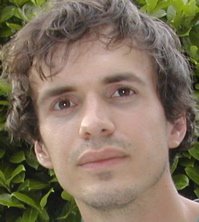Leaving SE Asia
Once again I find myself at the airport in Taipei. We have a ten hour layover here, and then another ten hour layover once we arrive in L.A. Originally, we were both set to return to the states on the 25th, but neither of us like Bangkok, and as a result, we moved our tickets up a few days.
It seems like the perfect time to reflect on the last three months, but for me at least, that will have to wait until I return to the states and go through my pictures. I'm excited to be going back to Portland, and now my mind is on preparing for school at Hopkins in the fall. Over the last three months, I've taken a break from my writing, and the hiatus has been good for me. On an active level, I haven't thought about my writing much, other than the ideas I have been generating on my travels. On a more subconscious level, I've been processing where I want my writing to go from here, and I've realized that the direction I'm going in is different than the one I was on before I started this trip.
A big part of that has been the sublimation of the ego and self that I've been feeling over the past three months. Perhaps the five beads I still wear on my wrist from Burma have turned me into a Buddhist after all. More likely, traveling has made me aware once again of the enormity of the world and the smallness of my own experience within the world.
It seems like the perfect time to reflect on the last three months, but for me at least, that will have to wait until I return to the states and go through my pictures. I'm excited to be going back to Portland, and now my mind is on preparing for school at Hopkins in the fall. Over the last three months, I've taken a break from my writing, and the hiatus has been good for me. On an active level, I haven't thought about my writing much, other than the ideas I have been generating on my travels. On a more subconscious level, I've been processing where I want my writing to go from here, and I've realized that the direction I'm going in is different than the one I was on before I started this trip.
A big part of that has been the sublimation of the ego and self that I've been feeling over the past three months. Perhaps the five beads I still wear on my wrist from Burma have turned me into a Buddhist after all. More likely, traveling has made me aware once again of the enormity of the world and the smallness of my own experience within the world.

